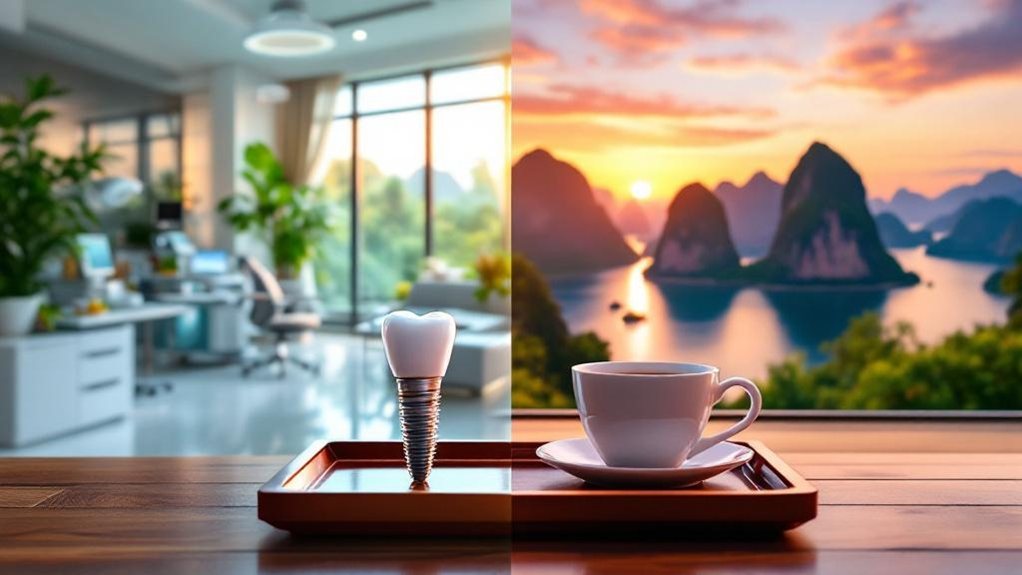Vietnam is becoming a preferred destination for dental tourists over Bangkok due to its blend of high-quality care and affordability. The country’s dental market is expanding rapidly, with a projected growth rate of 4.75% annually. Skilled professionals, often trained abroad, utilize modern technology such as CAD/CAM systems. Vietnam’s rich cultural landscape, enhanced tourism infrastructure, and affordability make it an appealing choice for dental tourists. Continue discovering what makes Vietnam an attractive option for dental care seekers.
Although often overshadowed by its larger neighbors, Vietnam is emerging as a major player in the domain of dental tourism, attracting an increasing number of international patients due to its affordability and quality of care. The Vietnam dental services market is projected to grow from USD 4.21 billion in 2024 to USD 5.50 billion by 2030, with a compound annual growth rate (CAGR) of 4.75%. This growth is greatly driven by dental tourism, contributing to continuous market expansion and investment.
Vietnam’s affordability in dental services compared to developed countries like the U.S. and Australia makes it a compelling option for international patients. The cost advantage does not compromise the quality of care, positioning Vietnam favorably against other dental tourism hotspots such as Bangkok and Hungary. Foreign patients, particularly from Western nations, are increasingly capitalizing on this cost-quality balance, seeking treatments that are financially prohibitive in their home countries.
Vietnam offers affordable yet high-quality dental care, rivaling Bangkok and Hungary, attracting Western patients seeking cost-effective treatments.
The quality of dental care in Vietnam is supported by an increasing number of well-trained dentists, many of whom have received education or residencies abroad. Clinics are equipped with modern technology that meets international standards, with practitioners continuously engaging in professional development. This has established a reputation for skilled professionals, drawing patients from countries like Australia, New Zealand, and the U.S. Advanced technology, such as dental microscopes and CAD/CAM systems, further enhances the appeal of Vietnamese dental services. AI-assisted diagnostics and treatment planning are also available, streamlining the patient experience and ensuring optimal care.
Vietnam’s tourism infrastructure enhancements further facilitate dental tourism. With improvements in accessibility and amenities, dental tourists can easily combine dental care with travel and leisure. The country’s rich cultural and recreational offerings enhance the overall patient experience. Government and private sector investments in transport and accommodation options align with broader medical and dental tourism growth strategies.
Annually, over 100,000 medical tourists travel to Vietnam for dental procedures, with international patient revenue surpassing USD 150 million. Patients hail from neighboring countries and Western regions, supported by rising disposable incomes. The demographic trends include both cosmetic dentistry seekers and those requiring essential treatments.
Additionally, technological advancements in services, particularly in advanced cosmetic dentistry, attract discerning patients, reinforcing Vietnam’s position as a preferred destination over Bangkok for smart dental tourists.




